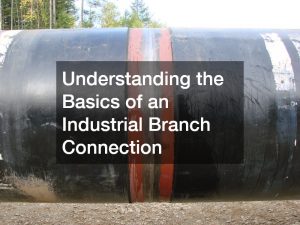If you’re looking to invest in a new business venture, deciding to build a restaurant can be one of the most exciting—but also demanding—choices you can make. From conceptualizing a unique dining experience to navigating local building codes and permits, the process requires a blend of creativity, business savvy, and meticulous planning. This guide is designed to walk you through the essential steps you need to follow to ensure your restaurant not only comes to life but also stands out in a competitive market. Whether your goal is to create an upscale restaurant or a cozy neighborhood bistro, there are many moving parts to consider. Below, we’ll explore these critical stages in detail so you can be fully prepared to meet the challenges head-on when you want to build a restaurant.
Laying the Foundation: Concept and Planning
Before you even pick up a hammer or call an HVAC contractor, the first step in your quest to build a restaurant is developing a clear concept. What type of cuisine do you plan to serve? Are you aiming for a casual eatery, a family-friendly establishment, or something more refined? Perhaps you have your sights set on a bustling seafood market theme, where fresh fish is displayed in an open format for customers to see before they dine. Or maybe you’re leaning toward a high-end dining space, offering modern culinary innovations in the spirit of an upscale restaurant.
- Market Research
Conduct thorough market research to determine what your community needs. Study the local demographics, competition, and consumer spending habits. While it might be tempting to follow trends, aim for a concept that resonates with the local culture yet remains distinct enough to attract diners seeking something new. - Business Plan
A well-crafted business plan is your roadmap to success. Include a detailed budget, target audience, menu ideas, and marketing strategies. This document will guide not only your day-to-day operations once you open but also your discussions with potential investors or lenders. - Budgeting and Financing
Establishing a realistic budget is critical. You’ll have both upfront costs—like construction, roofing services, and hvac installation services—and ongoing expenses such as staffing, raw materials, and marketing campaigns. Determine whether you’ll self-fund, bring on partners, or seek loans or grants. The clearer you are about your financials, the smoother the building process will be. - Location Scouting
Your location can make or break your business. Foot traffic, accessibility, parking availability, and neighborhood vibe all matter greatly. Whether you renovate an existing space or opt for new construction, ensure the spot aligns with your concept. If you aim to build a restaurant with a large outdoor seating area, you might look for a space that allows you to partner with a deck contractor to create an appealing al fresco dining experience.
Thorough planning helps prevent unforeseen complications, but it’s also important to remain flexible. As you move through the process, you’ll encounter challenges—like zoning regulations or local competition—that require adjustments to your original plan. Keep a close eye on your budget, and remember that it’s easier to make changes on paper before construction starts than once the walls are going up.
Navigating Permits and Regulations
Once you’ve fleshed out your vision and business plan, it’s time to tackle one of the more daunting aspects of trying to build a restaurant: getting all the necessary permits and meeting local regulations. These rules exist to ensure buildings are safe, accessible, and compliant with environmental standards.
- Zoning and Land Use
Confirm that your chosen property is zoned for commercial use and specifically approved for a restaurant. Local zoning laws can be very specific, sometimes even regulating parking requirements or outdoor lighting. If the property isn’t properly zoned, you’ll need to apply for a variance or consider a different location. - Health and Safety Codes
Health codes will dictate everything from how your kitchen is laid out to how far your seating areas must be from your cooking stations. Prepare to work closely with local health inspectors to ensure you meet the criteria. - Building Permits
You’ll also need building permits for any construction or significant remodel. This includes permits for roofing services, electrical work, plumbing, and structural changes. If you plan to add or change the layout of restrooms, enlarge the dining space, or build a bar area, you’ll need the relevant permits to do so legally. - Fire Safety
Fire safety regulations often require installing sprinkler systems, emergency exits, and fire-resistant building materials. The size of your restaurant and the number of patrons you expect to serve will influence what safety equipment is mandatory. - Alcohol Licensing
If you plan to serve alcohol, you’ll need to secure a liquor license. The costs and procedures vary significantly by state and municipality. This process can be quite extensive, so begin early if a bar is part of your concept.
It might feel overwhelming, but remember that professionals and consultants can help you navigate these complexities. An experienced project manager or contractor usually has a network of experts in areas like plumbing, architecture, and municipal codes. With the correct support, getting your permits and approvals won’t be as intimidating as it appears.
Selecting Your Team: Contractors, Designers, and More
To successfully build a restaurant that meets modern standards, you’ll need a skilled team. Each professional you hire should have a proven track record relevant to restaurants or commercial construction. Even though you might be itching to start the design process, assembling the right people should come first.
- General Contractor
A reputable general contractor will coordinate the entire build, from laying the foundation to managing daily construction tasks. This person will be responsible for scheduling inspections, sourcing materials, and ensuring deadlines are met. - Specialized Trades
- HVAC Contractor: Proper ventilation is crucial for any food establishment to manage kitchen fumes, maintain comfortable temperatures, and ensure good air quality. Work with a specialized HVAC contractor who can tailor a system to your kitchen’s high-heat environment.
- Roofing Services: If you’re constructing a brand-new building or need to reinforce an older structure’s roof, it’s essential to hire reputable professionals. A quality roof not only protects your restaurant from weather elements but also contributes to better energy efficiency.
- Plumbing: Commercial kitchens consume large volumes of water daily. From dishwashing stations to restrooms, you need a robust system designed for constant, heavy use. A plumbing specialist ensures that your drains, water lines, and sewage systems can handle the load.
- HVAC Installation Services: On top of having a good HVAC contractor, you may need a team that specializes in installing more advanced or large-scale systems. This is especially true if your restaurant’s heating and cooling demands exceed what typical commercial buildings require.
- Architect and Interior Designer
Collaborating with an architect can be invaluable for optimizing your space and ensuring you meet all building codes. Meanwhile, an interior designer can help you create the ambiance you want—whether that’s a cozy bistro or a sleek, modern dining room. - Project Manager
You might consider hiring a dedicated project manager if your build is particularly large or complex. Their job is to coordinate with various stakeholders, keep the project on track, and ensure quality control.
Your team should also include legal counsel, accountants, and potentially a restaurant consultant who can provide insights on layout, staff management, and operational flow. The goal is to surround yourself with experts who ensure that, as you build a restaurant, each phase runs smoothly and professionally.
Designing the Space: Form Meets Function
Designing your future restaurant is one of the most creative parts of the process. However, aesthetics must harmonize with practicality. Striking a balance between visual appeal and operational flow is essential—especially in the kitchen, where layout efficiency can significantly impact service.
- Kitchen Layout
Chefs often say a well-designed kitchen can make or break a restaurant. Focus on logical organization: raw food storage near prep stations, cooking stations near plating areas, and easy access to walk-in refrigerators. The more systematic your layout, the smoother the kitchen operations will be. - Dining Area
Consider how you want guests to feel when they enter. Should the atmosphere be intimate, lively, or modern-industrial? Material choices—from flooring to lighting—affect both the mood and the maintenance requirements. If you want an outdoor dining section, coordinate with a deck contractor early to ensure design cohesion. - Bar Area
If your concept includes alcohol service, decide if the bar will be a focal point or a small side element. The design can reflect the overall restaurant theme, but it also needs to stand out enough to attract patrons. Check local regulations for sink requirements, glass-washing stations, and other bar equipment placements. - Restrooms
Don’t underestimate the importance of clean, well-designed restrooms. They might not be the highlight of your restaurant, but they contribute greatly to customer comfort and perception. Pay attention to lighting, ease of navigation, and décor. - Efficiency and Workflow
A beautiful dining room is useless if staff can’t maneuver comfortably between tables. Ensure your floor plan accommodates traffic flow for servers, bussers, and customers. Narrow walkways and poor layout choices can hinder service speed and increase the likelihood of accidents.
An experienced interior designer will help you tie these elements together, from color schemes to seating arrangements. This is particularly crucial if you’re aiming to build a restaurant that stands out as an upscale restaurant—guests will be paying attention to every detail, from the decor on the walls to the table linens under their plates.
Overcoming Construction Challenges
No construction project is without its hurdles, and building a restaurant often involves unique challenges. Familiarizing yourself with common pitfalls helps you anticipate issues, budget appropriately, and adjust timelines as needed.
- Delays and Scheduling
Weather, delayed material shipments, or labor shortages can slow construction. Build buffer time into your schedule to avoid rushing crucial steps. If local regulations require you to pause construction for inspections, factor that into your timeline too. - Budget Overruns
Unforeseen expenses can arise quickly. Damaged structural components, outdated electrical systems, or additional water damage restoration might be discovered once walls are opened up. Setting aside a contingency fund—often 10-15% of your total budget—helps you handle surprises. - Water Damage
Construction sites are prone to leaks and flooding, especially if the roofing isn’t completed promptly. Addressing water issues immediately is paramount. Untreated water infiltration can lead to mold, structural damage, and costly repairs. Keep the contact information of water damage restoration services handy in case you need immediate assistance to minimize long-term harm. - Handling Equipment
Large kitchen appliances are bulky and delicate. Utilizing local moving companies specialized in commercial equipment can help you transport these items securely. Proper handling reduces the chance of damage that could lead to costly replacements or repairs. - Compliance Inspections
Health, fire, and safety inspectors will likely visit multiple times. Be prepared for re-inspections if you need to make changes. Maintaining a positive relationship with inspectors can help streamline these visits and get your approvals quicker.
Staying in constant communication with your project manager, contractors, and design team can reduce the stress these challenges create. A well-coordinated team addresses problems promptly, ensuring they don’t snowball into bigger issues that could derail your vision.
Essential Equipment and Facilities
A restaurant’s heart is its kitchen, but plenty of other areas need specialized equipment to ensure smooth operations. While you focus on the creativity of your menu, don’t neglect the basics that keep your establishment running behind the scenes.
- Kitchen Equipment
- Ovens and Ranges: Choose appliances that align with your menu. High-temperature ovens may be crucial if your signature dishes rely on fast-cooking methods.
- Refrigeration Units: Adequate refrigeration is essential, especially if you plan to serve fresh seafood in the spirit of a seafood market concept.
- Dishwashers: Commercial dishwashers must handle heavy loads efficiently to keep your serving ware spotless.
- Ventilation: Proper hood systems and exhaust fans help maintain a safe and comfortable cooking environment.
- HVAC Systems
Climate control is crucial for both your kitchen staff and your diners. Collaborate with specialists in hvac installation services to ensure your system is sized and designed properly. Adequate ventilation, heating, and cooling all enhance the dining experience and prolong the life of your kitchen equipment. - POS and IT Systems
A modern Point-of-Sale (POS) system streamlines order taking and payment processes. Integration with online reservations, table management apps, and inventory software can save time and reduce errors. - Storage and Waste Management
Having enough storage for non-perishables, paper goods, and cleaning supplies keeps your operations running smoothly. Waste disposal areas should be well-organized, secure from pests, and compliant with local sanitation regulations. - Water Damage Prevention
A small leak can escalate quickly if ignored. Install water sensors or a leak detection system in high-risk areas. Regular maintenance checks, especially around the kitchen and restrooms, can prevent a scenario where you require emergency water damage restoration mid-service.
Careful planning, frequent inspections, and preventive maintenance measures go a long way in extending the life cycle of your equipment and facility. When you build a restaurant with a reliable infrastructure, it frees you to focus on what truly matters: delivering an exceptional dining experience to your customers.
Embarking on the journey to build a restaurant is not just about erecting walls and placing tables; it’s about crafting an experience that resonates with people. Whether you envision a laid-back eatery adjacent to a bustling seafood market or a refined upscale restaurant that offers an unforgettable gourmet experience, the foundations you lay during construction and planning matter greatly. Collaborating with top-tier professionals—like a reliable HVAC contractor, reputable roofing services, and proficient plumbing specialists—can spell the difference between a project riddled with delays and a smoothly orchestrated opening.








